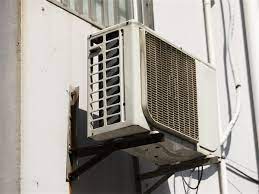There are five substances in the circulation of the refrigeration system: refrigerant, oil, water, air and other impurities. The first two are necessary to ensure the normal operation of the system, while the latter three substances are harmful to the system, but cannot be eliminated absolutely. . At the same time, the refrigerant itself has three states: vapor phase, liquid phase, and vapor-liquid mixed phase. Therefore, once the air conditioning and refrigeration system fails, its symptoms and causes are relatively complicated. Below:
1. The fan don’t run
There are two reasons why the fan does not rotate: one is an electrical fault and the control circuit is not connected; the other is a mechanical failure of the fan shaft. When the room air conditioner fan does not rotate, the temperature of the air-conditioned room will rise, and the suction pressure and discharge pressure of the compressor will decrease to a certain extent. When the air conditioning fan stops rotating, the heat exchange efficiency of the heat exchange coil in the air conditioning room decreases. When the heat load of the air conditioning room remains unchanged, the temperature of the air conditioning room will rise.
Due to insufficient heat exchange, the temperature of the refrigerant in the heat exchange coil will decrease relative to the original temperature, that is, the evaporation temperature will become smaller, and the cooling coefficient of the system will decrease. The evaporator outlet temperature sensed by the thermal expansion valve also decreases, resulting in a smaller opening of the thermal expansion valve and a corresponding decrease in refrigerant, so the suction and exhaust pressures both decrease. The overall effect of the reduction in refrigerant flow and cooling coefficient is to reduce the cooling capacity of the system.
2. The cooling water inlet temperature is too low:
As the cooling water temperature decreases, the compressor exhaust pressure, exhaust temperature, and filter outlet temperature all decrease. The air-conditioned room temperature remains unchanged because the cooling water temperature has not dropped to a level that will affect the cooling effect. If the cooling water temperature drops to a certain level, the condensation pressure will also decrease, causing the pressure difference on both sides of the thermal expansion valve to decrease, the flow capacity of the thermal expansion valve will also decrease, and the refrigerant will also decrease, so the refrigeration effect will decrease. .
3. The cooling water inlet temperature is too high:
If the cooling water inlet temperature is too high, the refrigerant will be subcooled, the condensation temperature will be too high, and the condensation pressure will be too high. The pressure ratio of the compressor will increase, the shaft power will increase, and the gas transmission coefficient will decrease, thus reducing the refrigeration capacity of the system. Therefore, the overall cooling effect will be reduced and the temperature of the air-conditioned room will rise.
4. The circulating water pump does not rotate:
When debugging and operating the refrigeration unit, the system circulating water pump should be turned on first. When the circulating water pump does not rotate, the cooling water outlet temperature and the condenser refrigerant outlet temperature rise most obviously. Due to the sharp decline in the cooling effect of the condenser, the suction temperature and exhaust temperature of the compressor also rise rapidly, and the condensation temperature The rise causes the evaporation temperature to also rise, but the rise in evaporation temperature is not as large as the rise in condensation temperature, so the cooling efficiency is reduced and the temperature of the air-conditioned room rises rapidly.
5. Filter clogged:
A clogged filter means the system is clogged. Under normal circumstances, dirty blockage often occurs at the filter. This is because the filter screen blocks the channel section and filters out dirt, metal shavings and other debris. Over time, the refrigeration and air conditioner will be blocked. The consequence of filter clogging is a reduction in refrigerant circulation. Many of the reasons are similar to the expansion valve opening being too small. For example, the compressor suction and exhaust temperature rises, the compressor suction and exhaust pressure drops, and the air-conditioned room temperature rises. The difference is that The filter outlet temperature is getting lower and lower. This is because throttling begins at the filter, causing the local temperature of the system to drop. In severe cases, local frost or ice may form in the system.
Post time: Oct-05-2023






